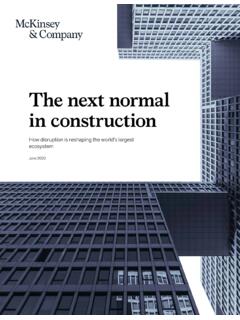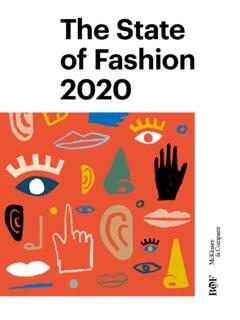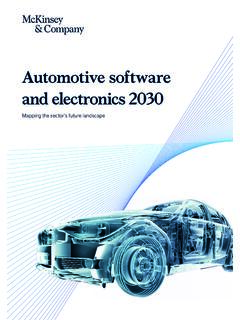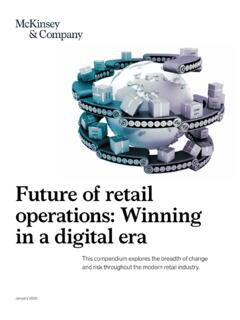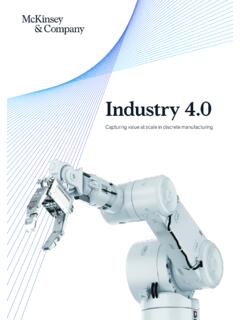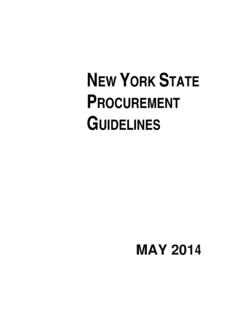Transcription of REINVENTING CONSTRUCTION: A ROUTE TO HIGHER …
1 REINVENTING construction : A ROUTE TO HIGHER . PRODUCTIVITY. FEBRUARY 2017. IN COLLABORATION WITH. MCKINSEY'S CAPITAL PROJECTS & INFRASTRUCTURE PRACTICE. EXECUTIVE SUMMARY. Since its founding in 1990, the McKinsey Global Institute (MGI) McKinsey's Capital Projects &. has sought to develop a deeper understanding of the evolving Infrastructure Practice global economy. As the business and economics research McKinsey's Capital Projects & Infrastructure arm of McKinsey & Company, MGI aims to provide leaders in Practice is a leading adviser on the planning, the commercial, public, and social sectors with the facts and financing, construction delivery, and operation insights on which to base management and policy decisions.
2 For of infrastructure, energy, mining, real estate, the second year running, The Lauder Institute at the University and other large capital projects and portfolios of Pennsylvania ranked MGI the number-one private-sector worldwide. We help clients improve on-time and think tank in the world in its annual 2016 Global Go To Think on-budget delivery of major projects and get Tank Index. the most out of existing capital assets. Working alongside owners, developers, contractors, and MGI research combines the disciplines of economics and financiers, we have experience across all markets, management, employing the analytical tools of economics asset classes, and stages of the project life cycle.
3 With the insights of business leaders. Our micro-to-macro . McKinsey provides our clients with a unique methodology examines microeconomic industry trends to combination of strategic advisers, practitioners better understand the broad macroeconomic forces affecting with deep sector and market knowledge, and business strategy and public policy. MGI's in-depth reports senior technical experts with decades of industry have covered more than 20 countries and 30 industries. Current experience in design and construction . Over the research focuses on six themes: productivity and growth, past five years, we have delivered impact across natural resources, labor markets, the evolution of global financial more than 3,000 engagements, including work on markets, the economic impact of technology and innovation, 150 megaprojects collectively valued at more than and urbanization.
4 $1 trillion. Our unique ability to partner with our Recent reports have assessed the economic benefits of clients and drive fundamental change is rooted in tackling gender inequality, a new era of global competition, our independent perspective, our alignment with Chinese innovation, and digital globalization. MGI is led by client goals, a deep commitment to innovation and four McKinsey & Company senior partners: Jacques Bughin, impact, and the depth and breadth of our expertise James Manyika, Jonathan Woetzel, and Frank Mattern, and experience. MGI's chairman. Michael Chui, Susan Lund, Anu Madgavkar, Sree Ramaswamy, and Jaana Remes serve as MGI partners.
5 Project teams are led by the MGI partners and a group of senior fellows, and include consultants from McKinsey offices around the world. These teams draw on McKinsey's global network of partners and industry and management experts. Input is provided by the MGI Council, which coleads projects and provides guidance; members are Andres Cadena, Sandrine Devillard, Richard Dobbs, Katy George, Rajat Gupta, Eric Hazan, Eric Labaye, Acha Leke, Scott Nyquist, Gary Pinkus, Shirish Sankhe, Oliver Tonby, and Eckart Windhagen. In addition, leading economists, including Nobel laureates, act as research advisers.
6 The partners of McKinsey fund MGI's research; it is not commissioned by any business, government, or other institution. For further information about MGI and to download reports, please visit Copyright McKinsey & Company 2017. REINVENTING construction : A ROUTE TO HIGHER . PRODUCTIVITY. FEBRUARY 2017. Filipe Barbosa | Houston Jonathan Woetzel | Shanghai Jan Mischke | Zurich Maria Jo o Ribeirinho | Lisbon Mukund Sridhar | Singapore Matthew Parsons | Philadelphia Nick Bertram | London Stephanie Brown | Minneapolis IN BRIEF. REINVENTING construction . The construction sector is one of the largest in the world economy, with about $10 trillion spent on construction -related goods and services every year.
7 However, the industry's productivity has trailed that of other sectors for decades, and there is a $ trillion opportunity to close the gap. Globally, construction sector labor-productivity growth averaged 1 percent a year over the past two decades, compared with percent for the total world economy and percent for manufacturing. In a sample of countries analyzed, less than 25 percent of construction firms matched the productivity growth achieved in the overall economies where they work over the past decade. Absent change, global need for infrastructure and housing will be hard to meet. If construction productivity were to catch up with the total economy, the industry's value added could rise by $ trillion a year.
8 That would meet about half of the world's annual infrastructure needs or boost global GDP by 2 percent. One- third of the opportunity is in the United States, where, since 1945, productivity in manufacturing, retail, and agriculture has grown by as much as 1,500 percent, but productivity in construction has barely increased at all. The new MGI construction Productivity Survey confirms many reasons for this poor performance. The industry is extensively regulated, very dependent on public-sector demand, and highly cyclical. Informality and sometimes corruption distort the market. construction is highly fragmented.
9 Contracts have mismatches in risk allocations and rewards, and often inexperienced owners and buyers find it hard to navigate an opaque marketplace. The result is poor project management and execution, insufficient skills, inadequate design processes, and underinvestment in skills development, R&D, and innovation. The productivity performance of global construction is not uniform. There are large regional differences, and major variations within the industry. The sector splits broadly in two: large-scale players engaged in heavy construction such as civil and industrial work and large-scale housing, and a large number of firms engaged in fragmented specialized trades such as mechanical, electrical, and plumbing work that act as subcontractors or work on smaller projects like refurbishing single-family housing.
10 The first group tends to have 20 to 40 percent HIGHER productivity than the second. However, even in the more productive heavy construction sector there are endemic potentially structural . challenges in meeting cost and schedule commitments on megaprojects, and players routinely subcontract specialized trades. Examples of innovative firms and regions suggest that acting in seven areas simultaneously could boost productivity by 50 to 60 percent. They are: reshape regulation; rewire the contractual framework to reshape industry dynamics; rethink design and engineering processes; improve procurement and supply-chain management; improve on-site execution; infuse digital technology, new materials, and advanced automation; and reskill the workforce.
